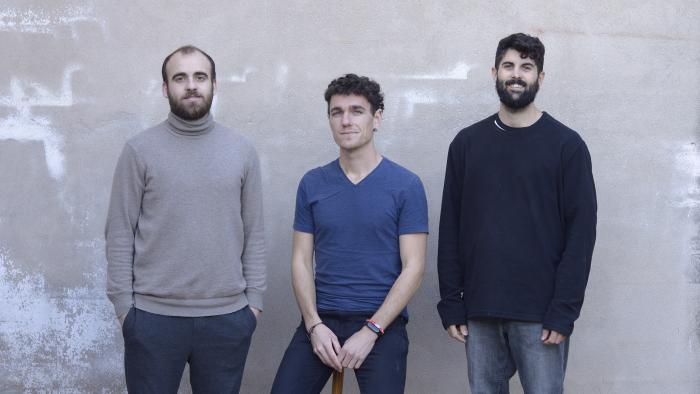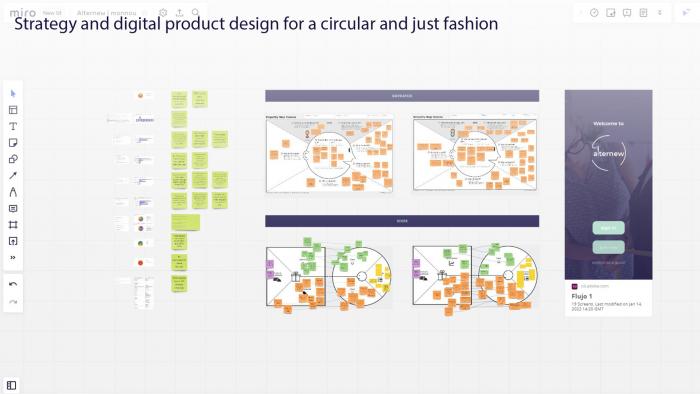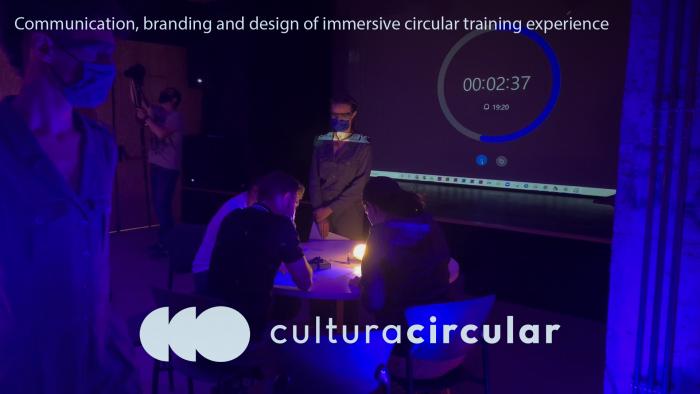Monnou is a studio that applies design to Triple Impact. This means introducing design strategies and processes in organizations to help them transition to regenerative and distributive models. Collaborating with clients and different stakeholders, we start with research to identify real needs and ways to facilitate change, we design strategies, and then deliver the products, services and communications which are part of this strategy. Circular and Social Innovation for designing a new world.
The transition to more sustainable and inclusive models starts with design. Design is not only about products and graphics, or about aesthetics either. It is about businesses and politics as well. It is about defining how things will be in the first place. It is about strategy.
Monnou studio accompanies organizations both in the private and public sector in the transition to regenerative and distributive models by design.
We offer circular and social innovation. Starting from research and strategy design with the client/collaborator, we end delivering the products, services, communications or reports that are necessary for implementing this strategy in order to transition to a more regenerative and distributive organization.
We also offer training to other design professionals, both freelancers or other design studios and designers inside organizations. This way, they can become change agents and collaborate with us for specific deliverables where they have expertise (i.e. graphics or industrial products).
Please highlight how the concept/idea can be exemplary in this context
General objective. Transition of industries and public sector towards regenerative models.
Specific objective 1. Helping SMEs and entrepreneurs in the (re)design of their circular business models, products and services.
Specific objective 2. Collaborating with Public Administrations in the (re)design of circular business models and services in the territory.
How:
Having training and experience in fields like International Cooperation for Development, Social Design and co-design, communication, Circular Economy, Industrial Design, technological R&D and Digital Transformation, we have different skills and a broad vision that helps us design sustainability.
We are to design not only products which are sustainable themselves, or communications which display sustainability of the organizations. We are also to design circular strategies together with the organizations, in order to assure that later products and communications are circular too.
We have a broad vision of circular businesses and how we can apply design to achieve circularity. At the same time, we are good facilitators, who aim to co-design solutions to those challenges which are more complex and require different skills and perspectives.
Please highlight how the concept/idea can be exemplary in this context
General objective. Transition of industries and public sector towards regenerative and distributive models.
Specific objective 1. Designing experiences related to circularity of businesses, products and services in a way that makes them accessible and attractive to most people.
Specific objective 2. Contributing to narratives that inspire new cultural values and change from a linear and fossil-based economy to a circular one.
How:
Making circular products and services attractive and with little pain points is key to scale circularity. As designers, we have experience with user research and experience design, which will be a key to assuring that the regenerative and distributive models we design finally function and are accessible and desirable for stakeholders.
Design as we understand it goes beyond aesthetics, but does not forget it. After research, we have the training and the ability to assure that the experiences we are designing are of quality and have the aesthetic value that is required.
Aesthetics play a key role in creating circular products, so that they are attractive and desirable to people (and therefore, people use these instead of other linear products) and, at the same time, they give positive experiences to those who use them. Aesthetics also play an important role in communication. As we accompany organizations with the design of their communications for social impact (brands and other communication products), we must assure that their aesthetics are appropriate for what we are communicating.
In the end, the transition to new models must be a pleasant experience, so that it actually occurs. And this transition also requires new aesthetics and narratives.
Please highlight how the concept/idea can be exemplary in this context
eGeneral objective. Transition of industries and public sector towards distributive models.
Specific objective 1. Helping SMEs and entrepreneurs in the (re)design of business models, products and services that make circular value distributive and accessible, through social innovation and co-design.
Specific objective 2. Collaborating with Public Administration in the (re)design of business models and services that make circular value distributive and accessible, through social innovation and co-design.
Specific objective 3. Include diverse visions (in terms of gender, procedence, etc.) in the design process.
How:
We are helping different SMEs and entrepreneurs to leverage their circular value, by means of designing brands, communications, products and services which are really circular and communicate this circular value. And we do this in a non-expensive way, starting with cheap prototypes to validate before moving to more expensive products.
When (re)designing models with the Public Sector, we co-design these with different stakeholders (including citizens), to assure that the products and services are inclusive and accessible. When working with the Private Sector we also co-design and bring different stakeholders that were initially not considered by the client/collaborator. We have found that, even if the entrepreneur or SME that starts a project with us has deep social awareness, we usually have to make them aware of some stakeholders that were not participating in the process. And we do that by means of the very methodology.
Rather than competing with every other design studio or agency, we aim to collaborate with them for some projects. We aim to find which specific expertise each professional has, in order to coordinate regenerative and distributive projects where a lot of professionals can benefit.
We are linked to local cultural spaces, citizen laboratories and associations that allow us to activate social innovation and citizen participation.
Please highlight how this approach can be exemplary
Our Western philosophy and society were somewhat born in Ancient Greece, where there was an expression called “kalòs kai agathós”. This expression meant that the Beautiful (kalòs) and the Good (agathós) were in close relationship and had to be in balance. Aesthetics and Ethics. We are heirs of this philosophy.
As a design studio, what we design must be circular and distribute this circular value among stakeholders. We consider all stakeholders in order to design functional solutions that are both regenerative (circular), which is mainly about environmental impact, but also distributive (accessible, inclusive and benefiting multiple parts), which is mainly about social impact. If a product or service is not accessible to most people, it will not contribute to real change even if it is circular, since most people will not be able to use it. At the same time, if different stakeholders do not receive value from circular design, they will not participate in it.
We also consider stakeholders in order to design meaningful solutions. Solutions that have shared values and are therefore sustainable in time. Solutions that are aesthetic and accepted by all.
Design has the power to change cultural views, and to create new economical models. It is communicative and practical at the same time. Monnou design studio focuses on making organizations with their products and services more regenerative and distributive: we aim to help them transition for Good. But their communication, their appearance and the experience they provide with their products and services, must be also Beautiful.
Most design studios or agencies in the territory have a great focus on functionality and aesthetics, but they lack the systemic approach to environmental and social issues. We bring business and political understanding to our methodologies, which include co-design with different stakeholders. We also bring broad knowledge in Circular Economy and how it can apply to both businesses and public administrations.
We start collaborating with organizations which are already contributing to Triple Impact and circularity, designing their products, services and communications with them. Then, we move to organizations which aim to do a circular transition but don't know how: we do research with them, design strategies with them and finally design the involved deliverables.
We are distributed designers, working from Valencia with people from different parts of the world. We aim to collaborate with those agents that can bring local production to solve one territory's need even if we are not in that territory. With our methodology, we are switching from a "Product In, Trash Out" era to "Data In, Data Out", shaping territories which are locally productive but globally connected.
For the design of specific deliverables, we might collaborate with other creatives and professionals too. We build specific teams for specific projects, so that we can offer the competences we lack (for example, web development) and still be agile.
We are designers, but also facilitators and trainers that will bring new consciousness to every design. And we have an expanding network of contacts and alliances, thanks to having implemented as well two formative and networking experiences related to circularity and Triple Impact: FAQ LINEAL podcast and Sintonía Ambiental series of webinars.
Currently: Networking with potential change agents, clients and collaborators. Design of products, services and communications with different triple impact projects.
We are collaborating in southeastern Spain and a few more territories. Also in NY.
Immediate next stage:
1. Training in Circular Economy for designers, both students and professionals. Networking with potential change agents, clients and collaborators, taking advantage of being in World Design Capital Valencia 2022. Design of products, services and communications with different triple impact projects.
Reach more territories in Spain.
Some of our next collaborators include circular projects in Southeastern Spain (mainly Valencia). We will leverage the connections acquired thanks to Sintonía Ambiental webinars and FAQ LINEAL podcast to start new actions.
Developing ou communication strategy and open new communication channels. Developing strategic projects that communicate our values and mission.
2. More training, not only for designers. Broaden network with more creatives and professionals. Design of products, services and communications for other organizations, in order to help them transition to circularity.
Reach other territories in Europe. We already have connections with Pakhuis de Zwijger (Nederlands), having a project selected by them. Also, we have some connections in Portugal and Germany, so we will start collaborating in these countries.
Reach Latin America: Colombia and Mexico. We already have connections with regenerative projects and creatives from these territories, as well as AECID-Colombia, so next steps include strengthening these alliances.
3. Design of circular business units with different organizations, by means of Social Innovation. Collaboration with different professionals for designing specific deliverables (products or communications) which are required for these strategies.
Keep internationalising our services.
Invest in strategic communication and networking to expand our community and position our initiative where it needs to be.
- Developing our brand and communication strategy.
- Creating a community of professionals from different sectors (public, private, Academia…) who are aligned with our purpose.
- Visiting different circular initiatives and industries to do research, in order to make visible their current contributions to circularity and to identify areas where we can co-design their way out of linear economy.
Develop some strategic projects which require funds and time. These projects usually have no initial briefing coming from a client, but they have collaborators and we create the briefing together with them. They are projects that help us gain experience in applying concepts that are somehow new, and they help us position the value of these concepts and practices as well. Some of them include:
- CompOn: a project about home and municipal distributed composting that involves digital and physical product design.
- Design of servitization models for local industries together with one of the clients/collaborators we work with, which is specialized in Product As A Service.
- Other projects.
Invest in getting strategic alliances and team expansion.
- Network of specialist designers and architects to work with.
- Network of other complementary professionals (finance, environmental and social impact assessors, developers…).
@Sáez Martínez, 2022
Content licensed to the European Union.



